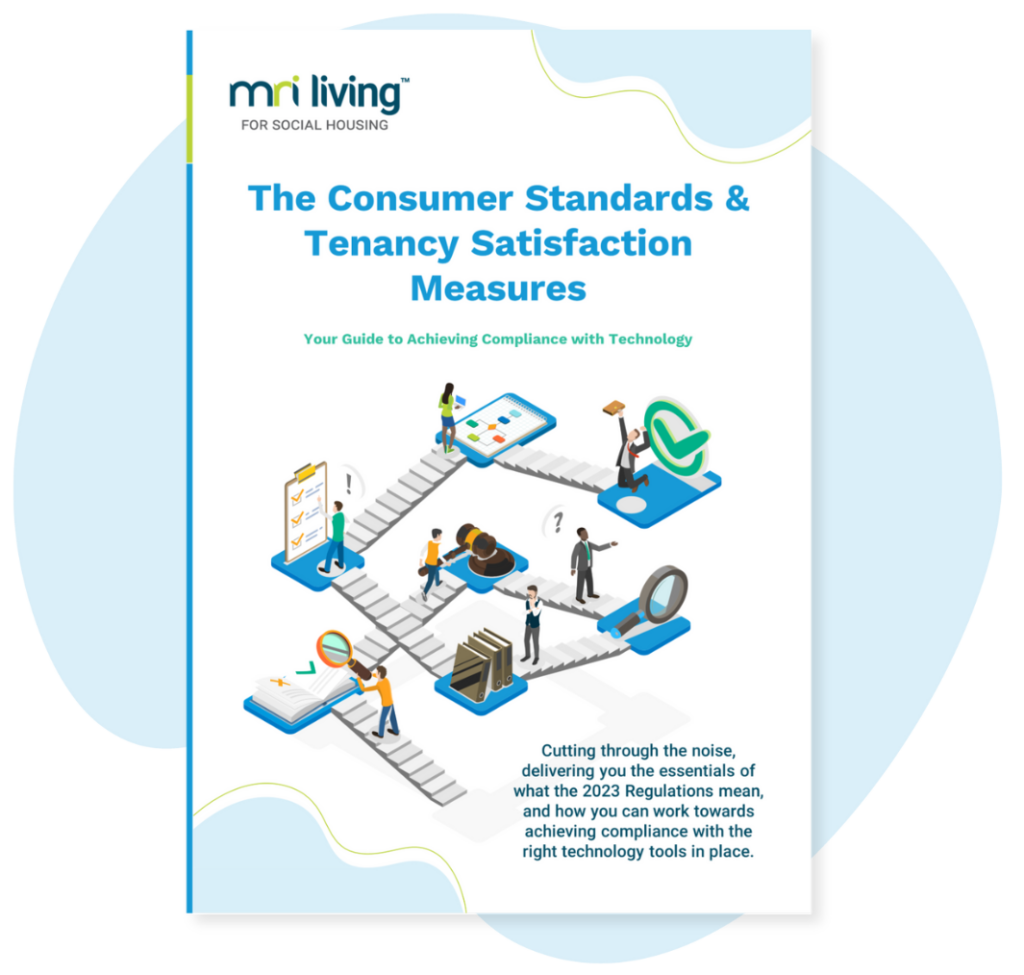Universal Credit; the resilience of the housing sector
Working every day in the sector it’s become apparent the additional pressures UC has put housing providers under
Greg Andrews, Head of Customer Operations, MRI Software
Welfare reform can create unforeseen costs and regardless of the success or failure of a rollout, the associated costs of change often fall outside of the government. Universal Credit (UC) is the greatest restructuring of the UK’s benefits system since the Beveridge Report of the 1940s. Under UC multiple means-tested benefits will transform into one-monthly payments, paid directly to recipients. The goals of UC are to increase the number of those in employment, ensure work is more advantageous than benefits and promote greater personal independence. The government estimated in 2018 that over 10 years, UC could possibly bring a return to the UK economy of £34bn.
The implications for housing service providers are significant. In 2016-17 10% of all households in England were rented from housing associations, that’s 2.4 million homes. Of that number, 59% were receiving government support with their rent. There has been a drive to become ‘UC ready’ before the full roll out in July of this year to protect tenants, the incomes of HAs and those working for them. The housing sector has shown itself to be both resilient and innovative in the face of major change; having to re-address the skills and responsibilities of housing professionals, the support offered to their tenants, how rent is collected, as well the adoption of digital tools. In this article we will outline the challenges and opportunities that UC has presented to both tenants and housing associations.
The change that has the most potential to disrupt housing providers is that responsibility for paying rent will now fall to the tenants themselves. It’s very possible that rent collection may require additional resources and personnel going forward. A report by Sheffield Hallam University puts forward the concern that changes may “force organisations to adopt a more hard-headed, commercial approach to protect income streams in the context of welfare reform.” The most at risk are smaller housing associations, which are less likely to have diversified income streams. In turn, it is unlikely that they would be able to weather temporary or long-term loss of rental income or pay for debt recovery solutions. In the future, it’s possible that bigger housing associations could go into partnerships or mergers to protect associations, employees and tenants.
In the bid to prepare for Universal Credit there has been a drive to ‘upskill’ existing staff as well as hiring staff from backgrounds not previously typical of a housing officer. The UK Collaborative Centre for Housing Evidence listed that the remit of officers had widened to include: “benefit advice; money management and budgeting advice; income collection; employment advice and support; IT; data monitoring; managing the Size Criteria; and, well-being and mental health advice and support.” The multi-disciplinary approach that some housing providers have engaged to be UC ready is a credit to the sector’s resilience and ability to adapt to disruption.
When asked, housing associations made it clear the welfare reform “is the most important challenge” facing them. The London Borough of Southwark, which was one of the first areas in which UC was rolled out in the UK decided to track how tenants were doing across 2016/17. Together with The Smith Institute they found of those put onto UC in 2016, 7% of rent was not paid and for the 2017 group, that number rose to 10%. One of the biggest causes of tenants going into arrears was the waiting period following the application for UC, and the pressure from potential debts they had accrued in that time. The headline finding was that they found very “little difference in the rent payment behaviour between the 2016 and 2017 groups.” This would suggest that the impact on rent arrears isn’t just attributable to the teething problems associated with all welfare reform. You can read the full report here.
There is also evidence that the switch is negatively affecting the behaviour of tenants who had previously been reliable in paying their rent. Of the 5,606 claimants in Fife council housing, 3,761 owe up to £5,621 in rent arrears; 1000 of those weren’t in arrears before the introduction of UC. In the crossover period savings are supposed to tide tenants over, which most tenants simply do not have. Another option is to claim 50% of the first UC payment, which then leads to a drop in further payments until the loan is repaid. One of the most common reasons for underpayment of rent is an unexpected financial hit, and because housing associations don’t charge interest or threaten violence against the repayment of their debt, they are more likely to lose out. With 10,000 more people transferring from Housing Benefit to UC by July and full rollout predicted by the end of 2023, housing providers have been put in a position where they need to navigate fewer people into debt through increased levels of support. A proactive strategy is vital in assisting people during those first crucial rent payments.
The argument for UC improving living standards once recipients have acclimatised to the changes is such that individuals and families will have more control and responsibility of their finances – and in turn be put on a ‘level playing field’ of experience with those not claiming UC. It is a simplified system that has amalgamated several, complicated benefits and so will theoretically be easier to access. Poverty.uk have predicted that 2.9 million working-age families will gain under UC and 1.8 million will lose. The work allowance boost announced in 2018 is set to give a boost of £630 to low-income families, actually making the system more generous than the benefits system that preceded it for those families who stand to gain.
The digital transformation that the benefits system has undergone is a process that will streamline services away from a series of complicated, jargon-filled forms.“Let there be no confusion here: digital welfare is a good thing. It’s a vast improvement on a paper or proxy service.” If both government and housing provider resources are given to building digital literacy, Universal Credit has the capability to bring many people online for the first time. In turn this could gain claimants skills and confidence for the jobs market. There is evidence that some local authorities are already providing these services, hiring experts to design accessible digital local services. For housing associations the adoption of digital self-service, automation and software services should be a primary resilience strategy. An unexpected result of UC is that in the wake of the challenges faced across the board, the sector has been sharing their innovations and learning on an impressive level.
The ability to predict those who could potentially fall foul of the switchover is difficult. Greg Andrews, our Head of Customer Operations tells us, “Working every day in the sector it’s become apparent the additional pressures UC has put housing providers under. The TAIM InSight solution proactively allows our customers to easily identify tenants who are a potential risk of defaulting on their rent payments and highlights where additional support is needed.” The system collates a wide array of publicly available data with a housing association’s own to pinpoint those who might be at risk. The software then presents claimants’ behaviours over a period of time and highlights the financial pressure points each individual faces. By identifying these patterns, housing associations can work proactively and retain more time and resources for deploying solutions. “The sooner that associations intervened when tenants first underpaid their rent, the greater the likelihood that arrears could be managed.”
TAIM InSight can give landlords the evidence, in the event that a tenant is erratic in payments, to be able to go to DWP and request an APA (Alternative Payment Arrangement). Ensuring that UC is bypassed for some tenants, means that rent can be paid straight to the landlord. In order to protect their income, a number of associations have also “appointed additional income (or rent collection) officers, a trend which was evident nationally.” One of the solutions we offer is the ability to locate where debt recovery from ex-tenants would be appropriate.
Despite the bumpy and in some cases, damaging results of Universal Credit, it is still too early to establish solid conclusions about the long-term impact the policy will have upon housing associations and tenants. A larger amount of responsibility has been handed over to private companies to ensure that people receive safe, affordable, healthy housing. Our sector in the main attracts those most dedicated to enriching their communities, but there is now even more of an impetus to embody and share best practice. What has become clear is that the sector has adapted quickly to changing circumstances and has diversified the skills base to tackle the challenges. Universal Credit has, amongst other things, showcased the housing sector’s resilience and aptitude to innovate under pressure.
Impact of welfare reforms on housing associations, UK Collaborative Centre For Housing Evidence – 2017 Download the full report here.
The Consumer Standards and Tenancy Satisfaction Measures: Your Guide to Achieving Compliance with Technology
Cutting through the noise, delivering you the essentials of what the Consumer Standards and Tenancy Satisfaction Measures 2023 Regulations mean, and how you can work towards achieving compliance with the right technology tools in place. New regulatio…

